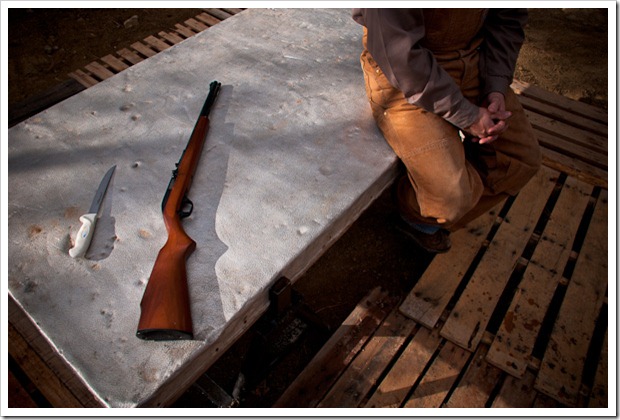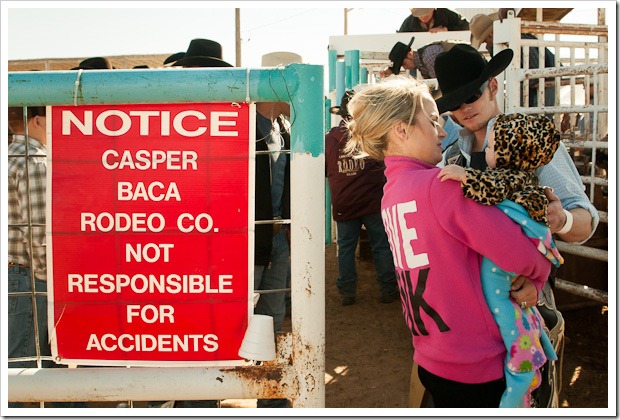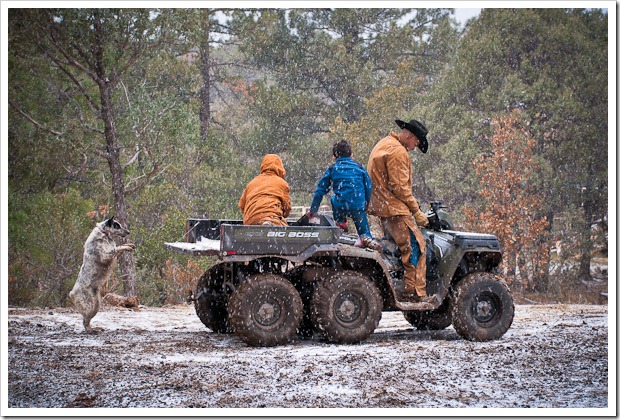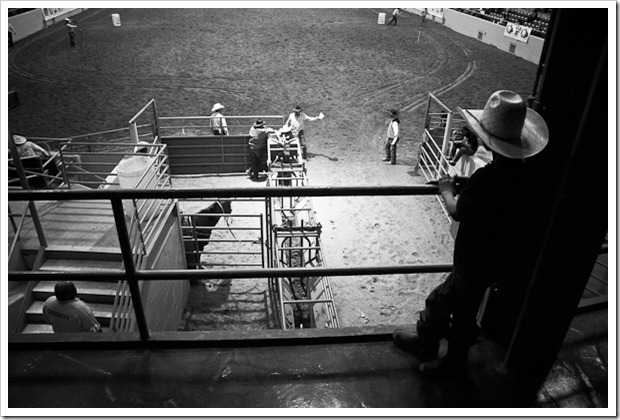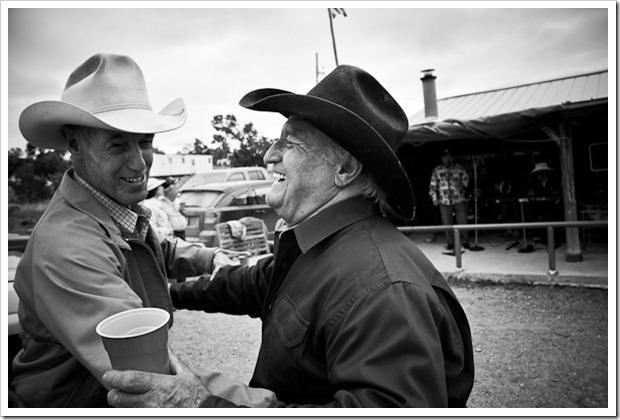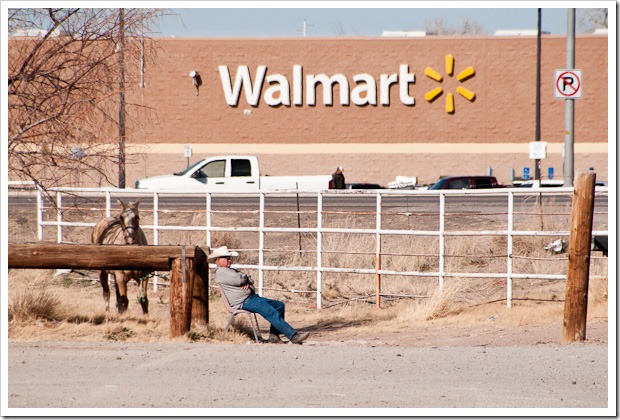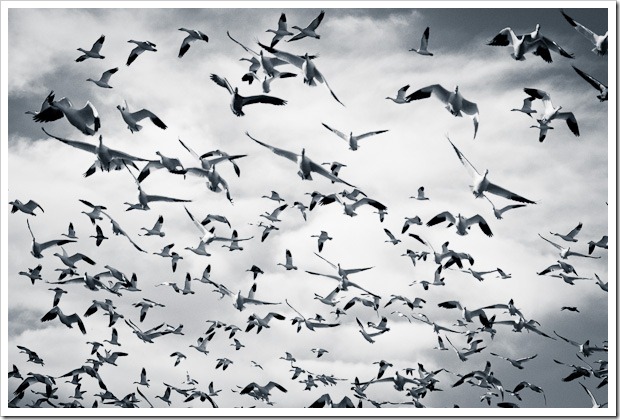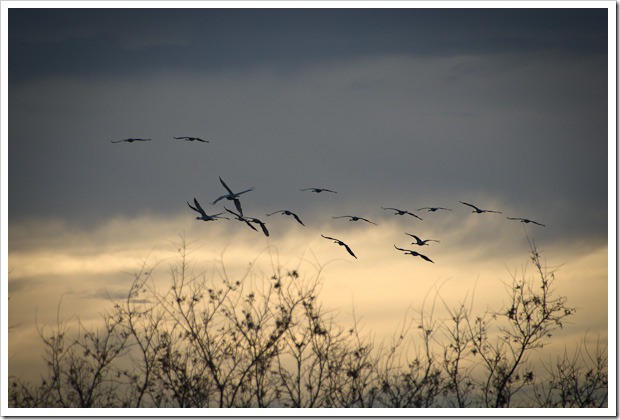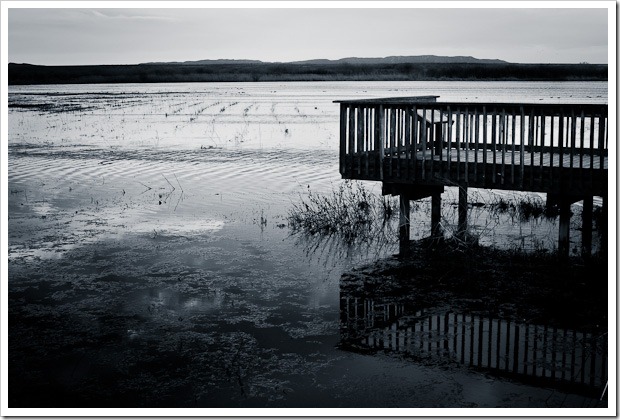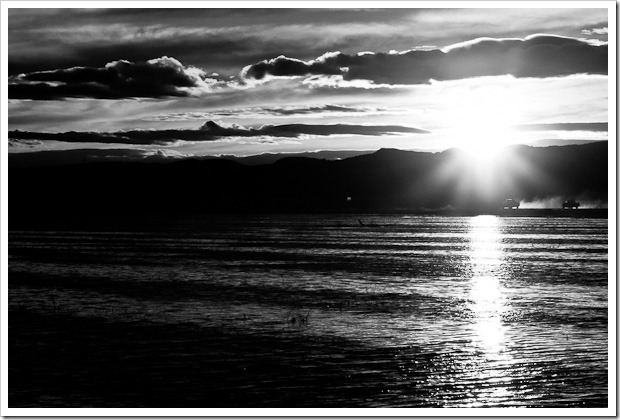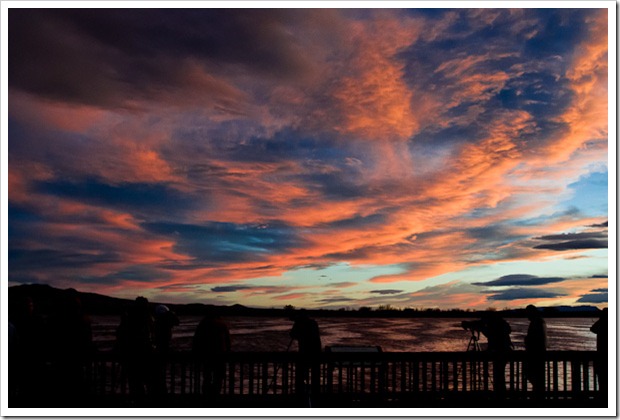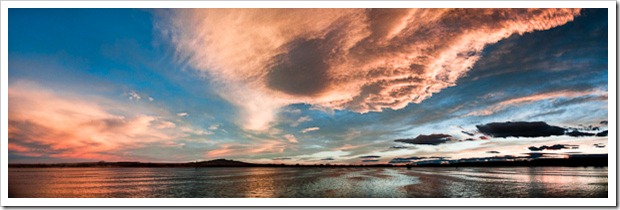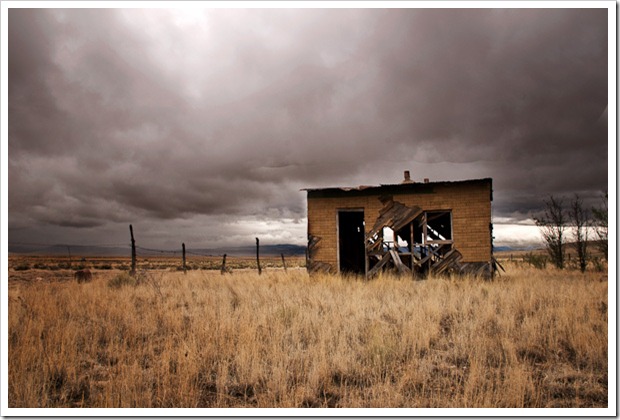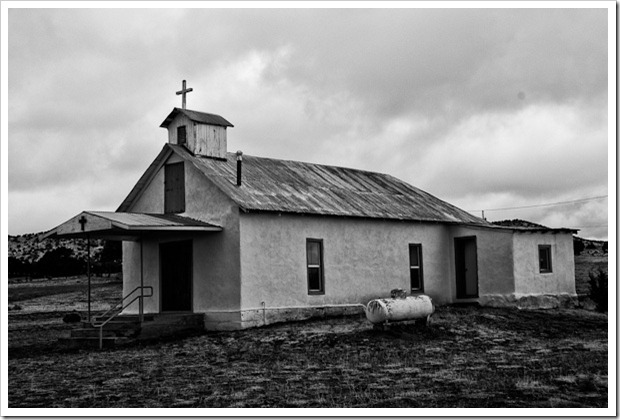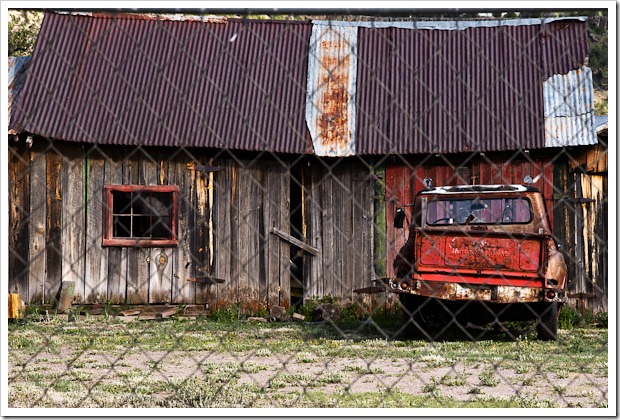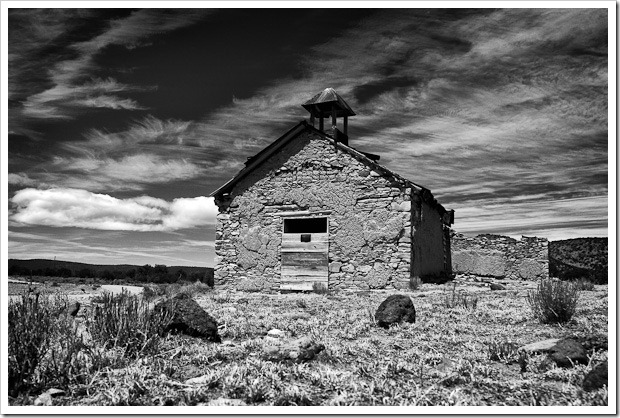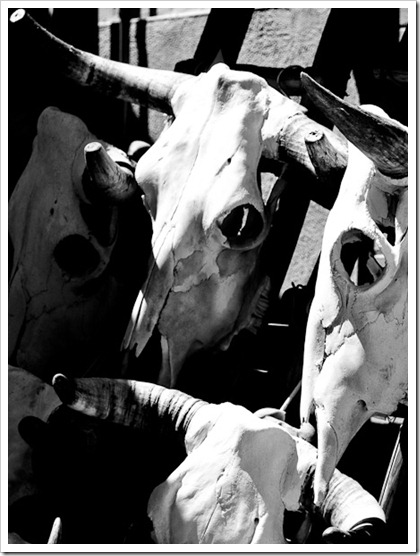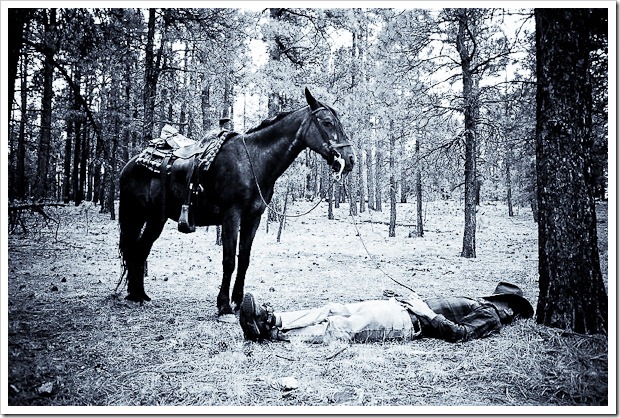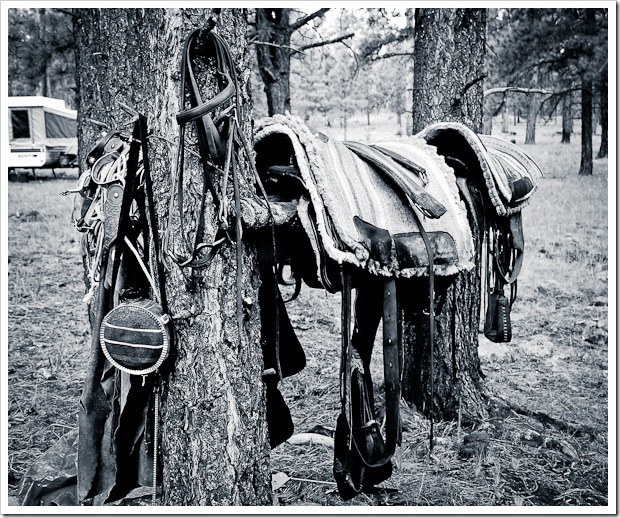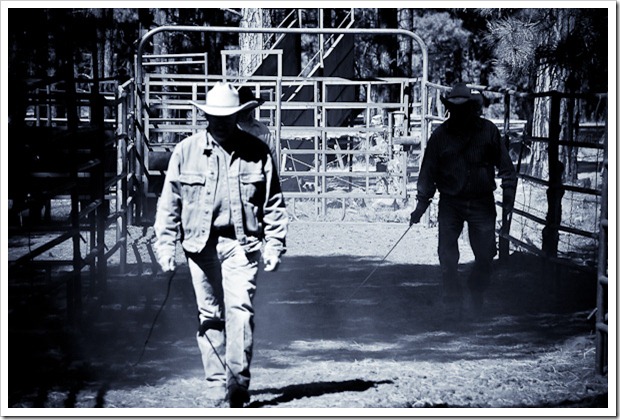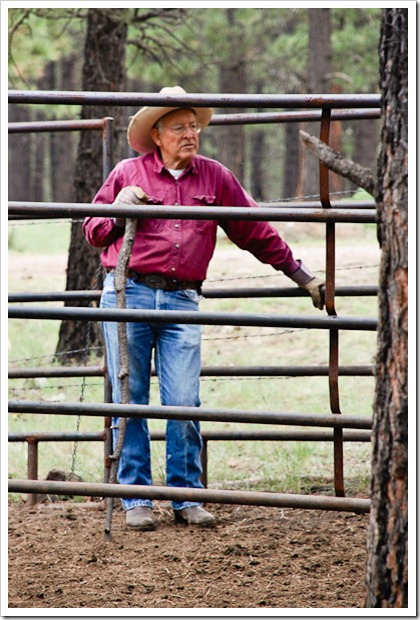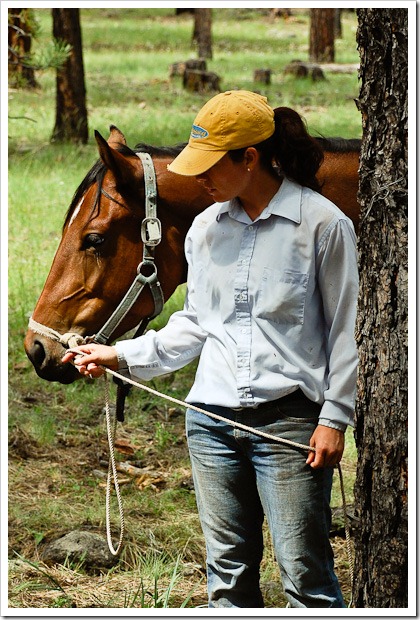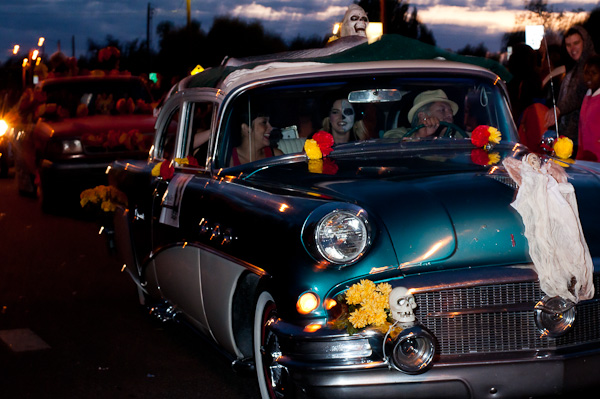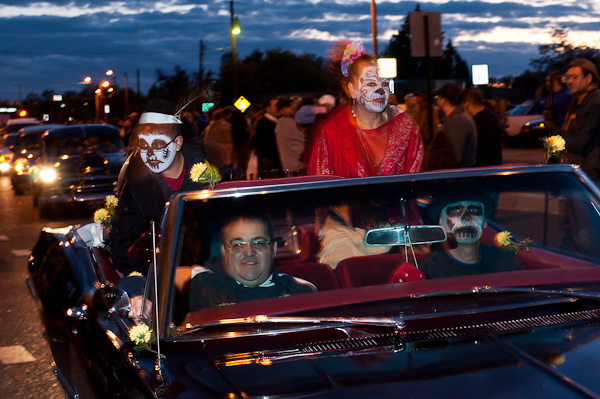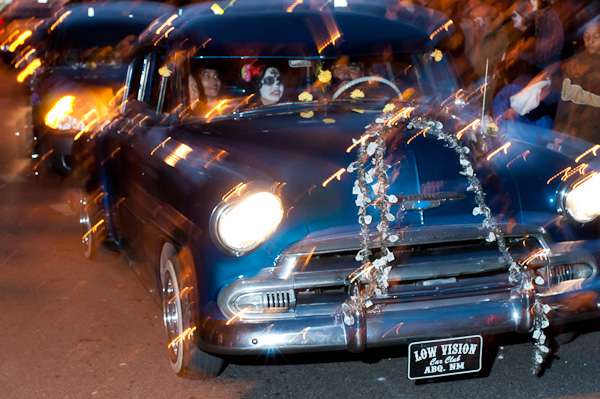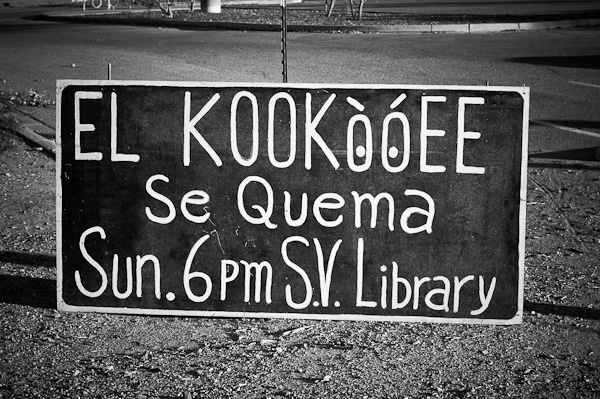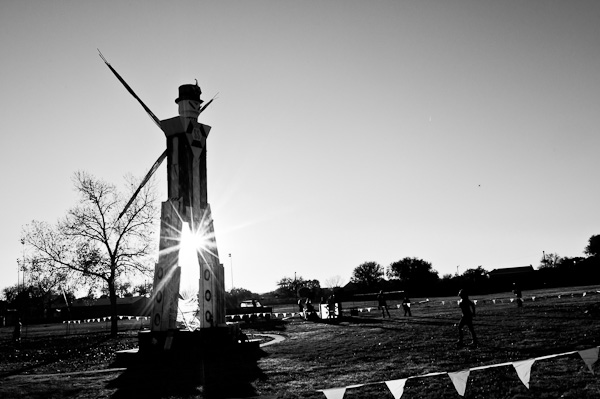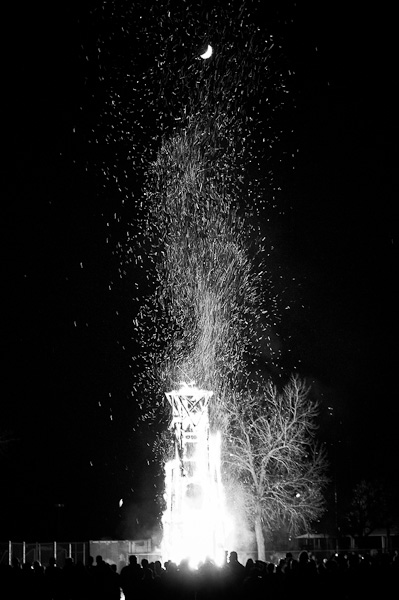In New Mexico, in the colder months – though not necessarily so – there continues the Hispano tradition of the Matanza. A pig is raised yearlong with the intention that on a special day, perhaps a birthday or an anniversary or a wedding, it is slaughtered, cooked, and consumed at a gathering of extended family and friends. On the first cold and eventually snowy morning in November Jaime awaits the signal from his Abuelo – his grandfather – to begin.
Nuevo Mexico
Sketches: Not Responsible
Sketches: 6 Wheeler
Sketches: Onlooker
Sketches: Dancing Cowboys
It’s not for me to know…
“It’s not for me to know; it’s for me to find out (discover).” This thought is what came to me as I browsed through some William Albert Allard images on the National Geographic site online. Allard, a 50 year contributor to the Geographic, is known for his incredible use of color as a compositional tool as well as his intimate stories in light other photographers wouldn’t choose to use.
What struck me as I looked at his images is how close he gets to his subjects. I’m not talking about positional distance, although he does that too. I mean how intimate the images become. It is as if he captures that essence of a moment that shows the subjects in all their three dimensional human depth. It is as if he manages to make an image from inside the subject’s defenses, from beyond the mask.
And even more, what Allard manages to capture in these images is not only the subject, but a piece of himself. And in doing so he captures a piece of me. Repeatedly I’ve found myself looking at an image thinking, “I know that feeling!” There is a piece of me in those images, and I imagine there is a piece of Allard, and of you too. That is good photography!
So why do I share all this? Well, I try to be better and better at photographing. I’m trying to learn what makes a good image and I’m trying to learn how to do it myself. A friend of mine suggested not too subtly that I not collect my own work but rather collect the good works of others. He suggested this mostly to spur along my artistic efforts, I know. And he has succeeded. So, I’ve been perusing the works of others including Allard, Steve McCurry, Larry Towell, Martin Parr, Yousuf Karsh and others. and I keep asking myself, “how did/do they do that?”
That question is not about the technical aspect of an image; I can figure that part out. It’s about the access; it’s about the edit; it’s about the moment; it’s about the intimacy; it’s about recognizing what matters out of all the uncontrollable chaos that exists in the world swirling around us all the time. And I realize, it is not for me to know by looking at others’ work; it is for me to discover – in the world, in front of my camera, in my images. These photographers managed to capture the images they did because they went seeking that intimacy. They let themselves become known and they let themselves discover others.
They got close, really close, and found that reflection of themselves in others and made an image of that. So, the question then arises, is how do I find that reflection of myself in my subjects, in the world? And show it?
Bosque del Apache, Part 2
In my previous post I showed a quick series about the Geese and Sand Hill cranes at Bosque del Apache, a National Wildlife Refuge about an hour south of Albuquerque, New Mexico. It’s a photographer magnet.
We had found a field full of birds, out of which came the images in the previous post, but soon they decided to move on to their nighttime location.
We decided jump ahead of the birds to go to an area known as “The Flight Deck.”
The “Flight Deck” is an observation station placed in the flooded fields at a favorite resting spot for the birds. Word has it that thousand of birds usually spend the night here…as well as several zealous photographers. This time the birds landed at a neighboring field without a deck. They tend to do that if there are predators nearby. So all that was left was a gaggle of photographers with impossibly large lenses, the water, and the sunset.
Forward and Backward
The other day I mentioned my wild idea to plunge headlong into a photographic project depicting my current home, the State of New Mexico. You can read about it here if interested. Some of the feedback I received was that people are pretty excited to see some or all of the work I’m doing here, even using it for research into their own photographic journeys (yikes!)
So I thought it might be fun to look back at some images that seem to fit the project that I took before the idea even crystallized in my being. So, just for fun, here are a few:
Dia de los Muertos 2011 (Part 2)
Read Part 1 here.
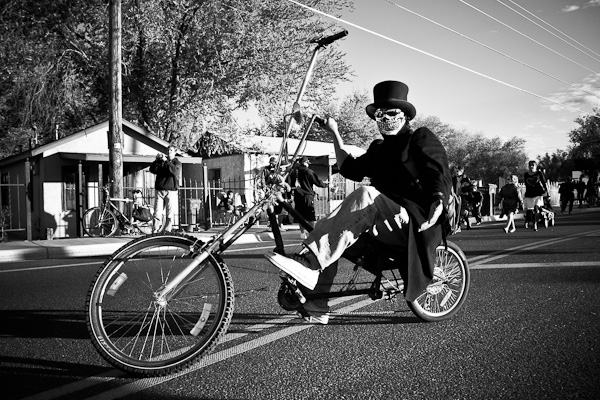 I went to this year’s Muertos Y Marigolds Dia de los Muertos Parade with a better understanding of what I would encounter. After all, I’d been each of the past three years. It is a really fun and fascinating event with photo opportunities in nearly every direction. This year was no different; more so even!
I went to this year’s Muertos Y Marigolds Dia de los Muertos Parade with a better understanding of what I would encounter. After all, I’d been each of the past three years. It is a really fun and fascinating event with photo opportunities in nearly every direction. This year was no different; more so even!
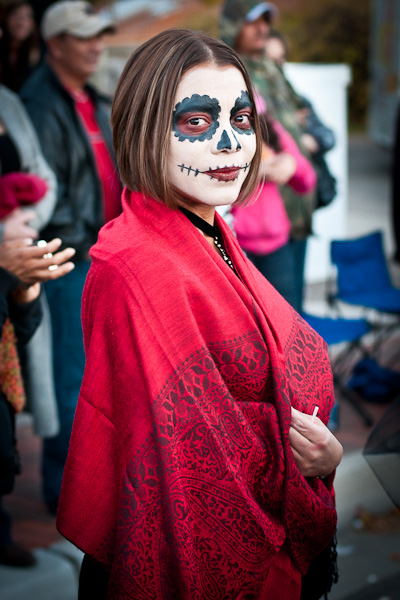 My goal was to photograph images that could support previous efforts to create the feeling of being at the parade, so I started looking for more images of the spectators interacting with the participants. I found this really challenging though because so many of the spectators are dressed up, painted, and generally taking part in the entire spectacle. It is fabulous, and distracting!
My goal was to photograph images that could support previous efforts to create the feeling of being at the parade, so I started looking for more images of the spectators interacting with the participants. I found this really challenging though because so many of the spectators are dressed up, painted, and generally taking part in the entire spectacle. It is fabulous, and distracting!
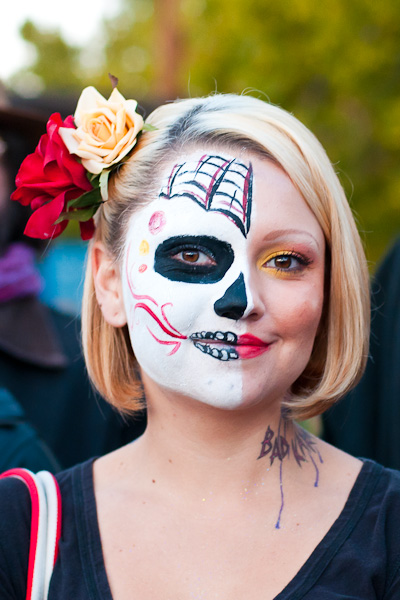
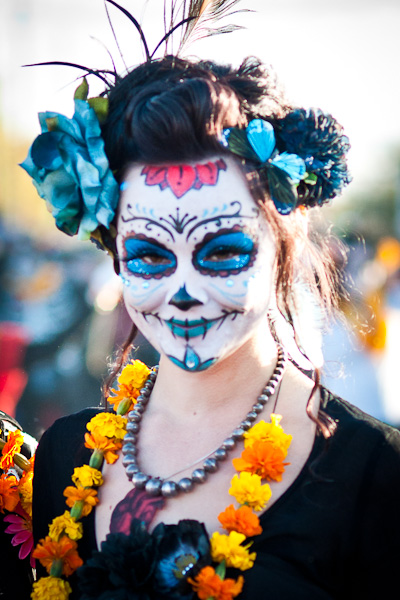 It became quite challenging to tell the participants and spectators apart.
It became quite challenging to tell the participants and spectators apart.
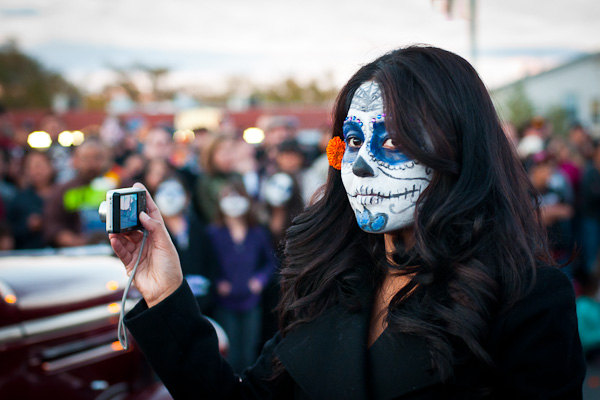
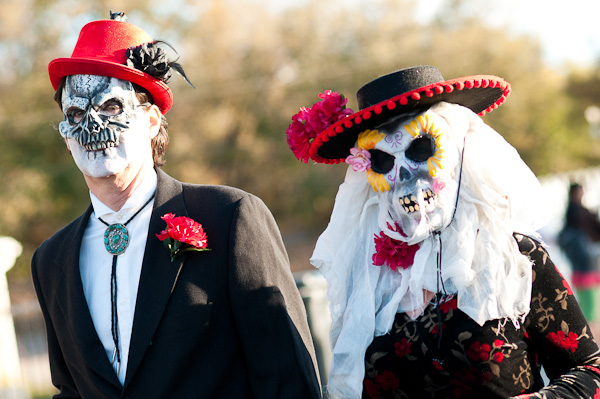
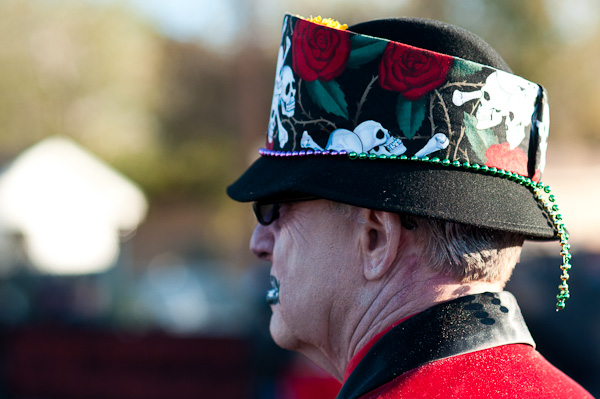
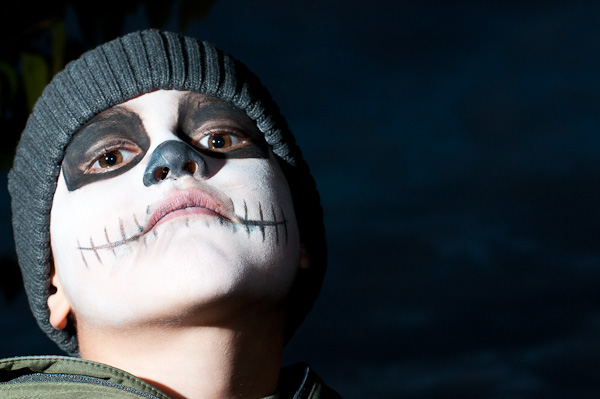 Eventually the sun dipped below the horizon and I broke out my flash. Using it off camera I began to play with some exposures of the tail end of the parade-those folks that hung in there, did the length of the parade route in the dark…and the cold.
Eventually the sun dipped below the horizon and I broke out my flash. Using it off camera I began to play with some exposures of the tail end of the parade-those folks that hung in there, did the length of the parade route in the dark…and the cold.
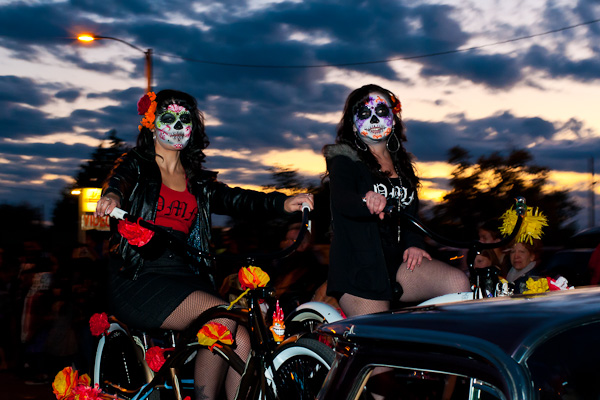
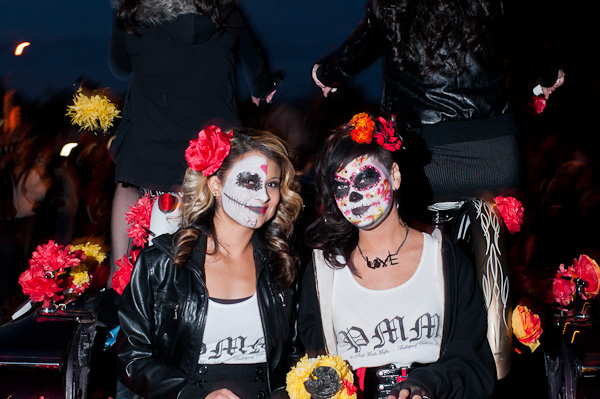 In the end it was these last three images that have more of the feel that I was looking for.
In the end it was these last three images that have more of the feel that I was looking for.
El Kookooee Se Quema (El Kookooee Burns)
Each year, on the last Sunday in October, the Mexican Bogeyman of El Kookooee is burned in effigy in the South Valley of Albuquerque, New Mexico. I’d never been to this event, or it’s bigger cousin, the Burning of Zozobra 50 miles north in Santa Fe, and so I thought I might go. I arrived early to get a feel for the environment and try to get a sense of what was going to happen. I’ve felt driven and called, both, to document and tell stories of this enchanted land where I live and although Daniel Milnor has also embarked on his journey to tell the story of New Mexico, I can’t help but tell my own vision of this place.
Each year the effigy is designed by a middle school student and then the design is reproduced giant size into El Kookooee, the Bogeyman. The burning of El Kookooee culminates the Festival de Otoño in this Latino neighborhood and is intended to help maintain the cultural heritage of Hispanics in the area. The effigy is stuffed with your fears and worries, written on slips of paper, to symbolize ending and rebirth.
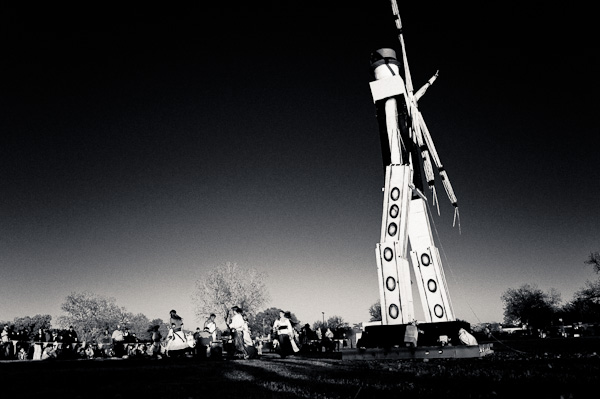 As the day marched toward its inevitable conclusion and the crowds began to gather on the South Valley Baseball Fields the giant statue of El Kookooee was consecrated by Aztec Dancers, a belly dancer or two, and eventually by fire dancers.
As the day marched toward its inevitable conclusion and the crowds began to gather on the South Valley Baseball Fields the giant statue of El Kookooee was consecrated by Aztec Dancers, a belly dancer or two, and eventually by fire dancers.
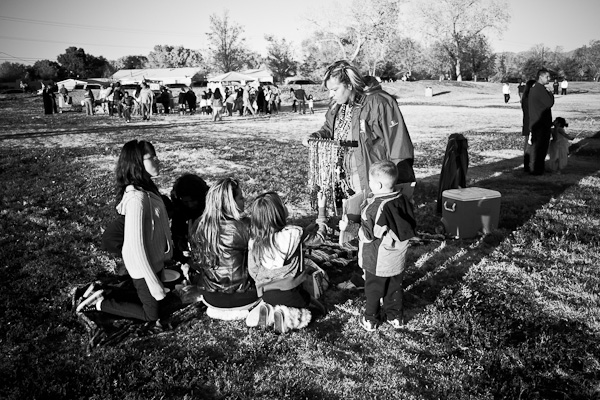 The crowd took on a festival feeling as families arrived, set up picnic chairs and coolers, and children ran around and played. Folks arrived by car, by scooter, by foot, on horseback, and four wheeler.
The crowd took on a festival feeling as families arrived, set up picnic chairs and coolers, and children ran around and played. Folks arrived by car, by scooter, by foot, on horseback, and four wheeler.
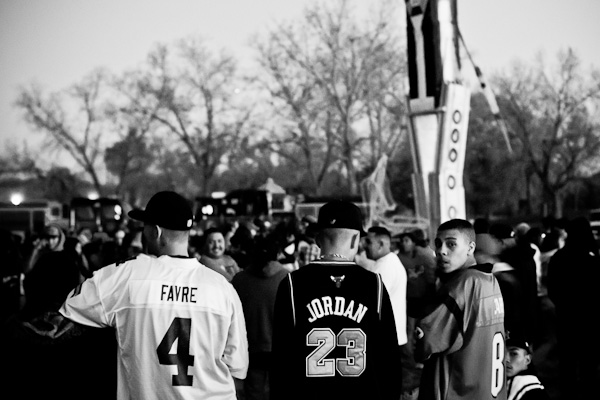 Eventually night set in and the anticipation of the crowd was raised along with the volume on the PA system. To the beats of “Ring of Fire” by Johnny Cash, “Burning Down the House” by the Talking Heads, and the cries of “burn it! burn it! burn it” from the crowd, the Fire Dancers took over the attention of the onlookers.
Eventually night set in and the anticipation of the crowd was raised along with the volume on the PA system. To the beats of “Ring of Fire” by Johnny Cash, “Burning Down the House” by the Talking Heads, and the cries of “burn it! burn it! burn it” from the crowd, the Fire Dancers took over the attention of the onlookers.
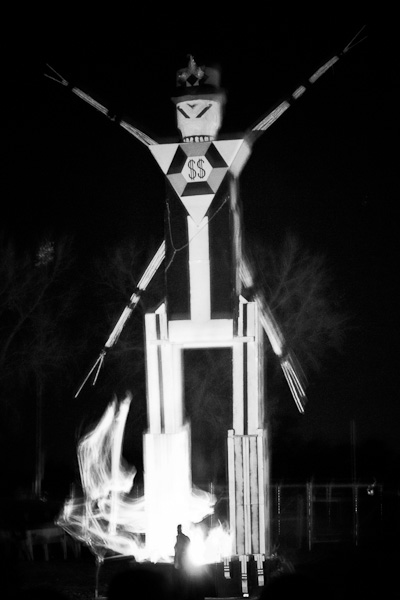 Eventually the Fire Dancers earned their due and El Kookooee took the first steps in achieving his purpose as flames quickly licked their way up his right leg and engulfed him to the approving roar of the crowd.
Eventually the Fire Dancers earned their due and El Kookooee took the first steps in achieving his purpose as flames quickly licked their way up his right leg and engulfed him to the approving roar of the crowd.
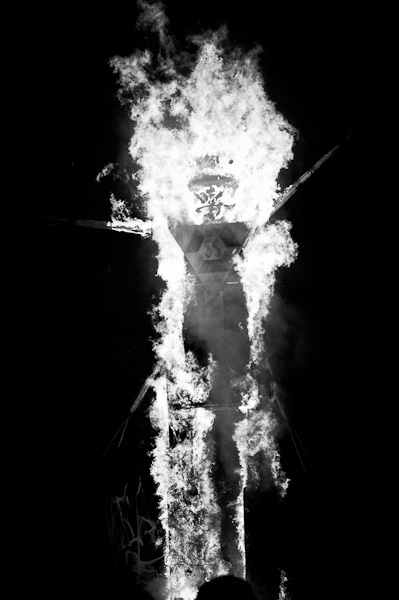 Not long after, the people grew silent as people often will when faced with a cold dark night and a strong contained fire.
Not long after, the people grew silent as people often will when faced with a cold dark night and a strong contained fire.
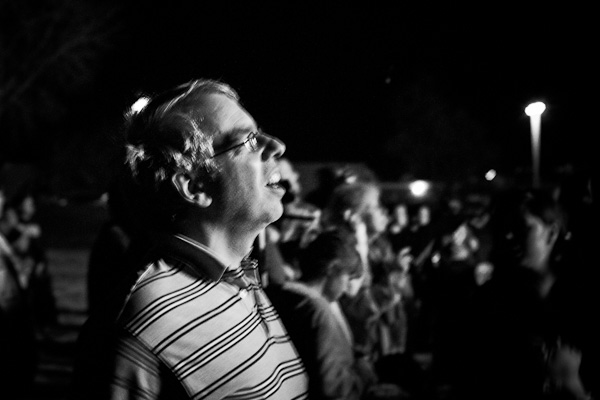 Whether lost in reflecting or filming the thing going up, not many could take their eyes from the burning bogeyman.
Whether lost in reflecting or filming the thing going up, not many could take their eyes from the burning bogeyman.
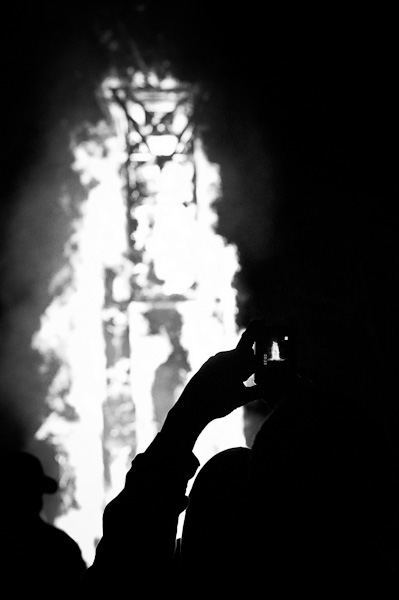 And eventually he lifted everyone’s fears and worries into another winter’s night.
And eventually he lifted everyone’s fears and worries into another winter’s night.

